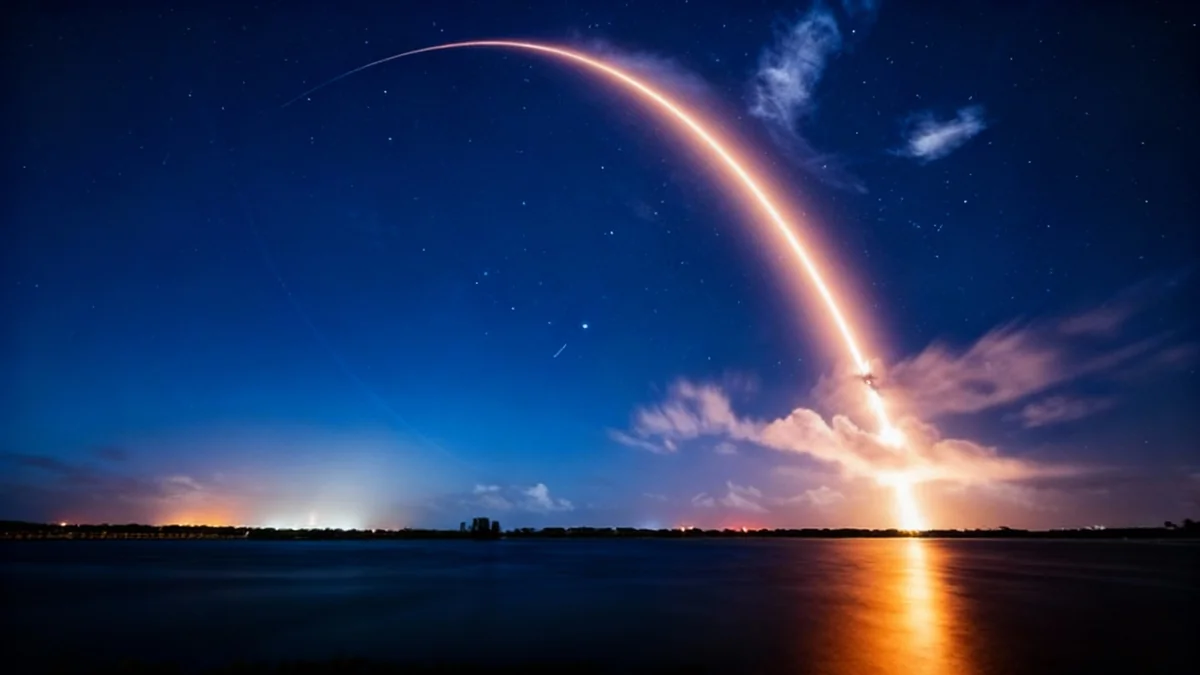Muon Space, a satellite systems provider, has announced an agreement to integrate SpaceX's Starlink mini laser terminals into its Halo satellite platform. This collaboration is set to create a persistent, high-speed optical connection for satellites in orbit, fundamentally changing how data is accessed and managed from space.
The integration will allow Muon's satellites to connect directly to Starlink's global network, enabling continuous, real-time data streaming and command operations. This shift eliminates the traditional delays associated with waiting for a satellite to pass over a ground station, paving the way for immediate data delivery and new operational capabilities for commercial and scientific missions.
Key Takeaways
- Muon Space will integrate SpaceX's Starlink mini laser terminals into its Halo™ satellite platform.
- The partnership enables persistent, real-time optical connectivity for satellites in low-Earth orbit.
- The laser links support speeds up to 25 Gbps, drastically reducing data latency from hours or minutes to milliseconds.
- This technology will significantly benefit time-critical missions, such as the FireSat constellation for wildfire detection.
- The first Starlink-enabled Muon satellite is scheduled for launch in the first quarter of 2027.
Transforming Satellite Operations
For decades, operating satellites in low-Earth orbit (LEO) has been a process marked by patience. Operators typically had to wait for brief windows of opportunity when a satellite passed over a designated ground station to download data or send new commands. This system created inherent delays, limiting the ability to respond to events on Earth in real time.
The agreement between Muon Space and SpaceX marks a significant departure from this model. By equipping Muon's Halo satellites with Starlink's compact laser communication terminals, the spacecraft will become active nodes on a vast, interconnected network in space.
"This is a sea change in how space systems operate," said Pascal Stang, CTO of Muon Space. "With persistent optical broadband, Muon Halo satellites will move from being isolated vehicles to becoming active, real-time nodes on Starlink's global network."
From Intermittent Contact to Always-On
Traditionally, a satellite in LEO might only be in contact with a ground station for a few minutes per orbit. Data collected during the rest of its 90-minute journey around the Earth would have to be stored onboard until the next downlink opportunity. The new system routes traffic through SpaceX's existing mesh of laser-linked satellites, creating a near-continuous data pipeline to the ground.
This shift transforms how missions can be designed and executed. Instead of pre-programming a satellite's entire operational sequence, ground controllers can task the spacecraft in real time, adjust its mission parameters on the fly, and receive high-bandwidth data almost instantaneously.
The Technology Behind the Leap Forward
At the heart of this new capability are SpaceX's Starlink mini laser terminals. These compact devices are designed for high performance and reliability in the harsh environment of space. They create focused beams of light to transmit massive amounts of data between satellites.
High-Speed Data from Orbit
- Link Speed: Up to 25 Gbps per terminal.
- Range: Effective at distances up to 4,000 kilometers.
- Latency: Data travels from orbit to the ground in milliseconds.
- Security: Traffic is protected with encrypted, mutually authenticated tunnels and hardware-anchored keys.
Each terminal provides a high-throughput connection, essentially creating a data center-class pipeline from space. This allows for continuous data streaming to terrestrial points of presence and cloud computing environments. It also opens the door for advanced in-orbit processing, where satellites can run artificial intelligence algorithms and perform data fusion before transmitting refined insights back to Earth.
"High-speed, low-latency connectivity on orbit is foundational for modern space missions. By integrating Starlink mini lasers, Muon's spacecraft can remain persistently connected through our in-space laser mesh, enabling real-time tasking, continuous command-and-control, and immediate data delivery to terrestrial points of presence."
Michael Nicolls, VP of Starlink Engineering at SpaceX
For missions requiring maximum uptime, Muon's Halo platform can be configured with multiple terminals. This allows for "make-before-break" handovers, where a new connection is established before the previous one is terminated, ensuring over 99% availability during typical LEO operations.
A Game-Changer for Earth Observation
The practical applications of this technology are vast, particularly for time-sensitive missions. One of the primary beneficiaries will be the Earth Fire Alliance's FireSat constellation, a system designed and built by Muon Space to detect and monitor wildfires globally.
Currently, even advanced wildfire detection satellites can experience a delay between detecting a fire and delivering that critical information to first responders on the ground. This latency, which can average around 20 minutes, can be the difference between containing a small ignition and fighting a large, uncontrollable blaze.
Brian Collins, Executive Director of the Earth Fire Alliance, explained the potential impact. "Starlink's optical connectivity offers the potential to further reduce our data delivery timeline, providing end users with the immediate information necessary to act while fires are at their earliest stages, ultimately preventing more large, disaster-scale fires."
With the integration of Starlink's lasers, the data latency for FireSat is expected to drop from minutes to near real-time. Incident commanders would receive instant alerts of new ignitions, enabling rapid mobilization when a fire is still small and manageable. They could also receive continuous updates on a fire's perimeter and its threat to nearby communities.
Implementation and Future Outlook
Muon Space has already started the process of integrating the laser terminals into its current customer constellations. The company anticipates launching its first Starlink-enabled Halo satellite in the first quarter of 2027.
This partnership is part of Muon's broader strategy of providing a vertically integrated, full-stack solution for satellite missions. Its MuSat XL platform, a 500 kg-class spacecraft, is designed with high-precision pointing and significant payload capacity, making it well-suited for missions that require both advanced sensors and high-speed data transfer.
"Our customers have been clear – their increasing operational needs require near real-time access to their spacecraft and payloads for tasking, compute, and data transfer," said Greg Smirin, President of Muon Space. "With Starlink's mini lasers integrated natively into Muon's flight-proven Halo platform, we're able to turn real-time connectivity from aspiration into practice across time-critical missions."
This move positions Muon Space to offer capabilities previously unattainable in the commercial satellite market, effectively turning each satellite into an extension of a distributed, cloud-connected data center operating in orbit.





